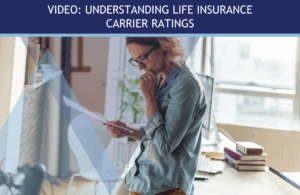
How to evaluate insurers is one of the most important questions to ask when shopping for life insurance. Our quick video on Understanding Life Insurance Carrier Ratings breaks down what these ratings mean—and why they matter for long-term policy performance.
Carrier ratings are issued by independent credit rating agencies like A.M. Best, Moody’s, Fitch, and S&P Global. These agencies assess a life insurance company’s financial strength and claims-paying ability based on criteria like capital reserves, investment quality, and risk exposure. In other words, they help determine how likely it is that a company will be able to fulfill its promises—10, 20, or even 40 years down the road.
High ratings from multiple agencies suggest a carrier is well-capitalized and conservatively managed. But ratings aren’t the only thing to look at. Strong carriers also have large surplus capital, solid risk-based capital (RBC) ratios, and quality investments that match long-term obligations.
The video also covers what happens in the rare event that a carrier becomes insolvent. State guaranty associations step in to provide coverage—often up to $300,000 in death benefits—depending on where you live. Many carriers also have reinsurance partners, which adds another layer of protection by spreading the financial risk.
At Improve My Life Insurance, we help you look past the marketing and dig into the real financial strength behind your policy. Carrier ratings are just one part of our due care process, but they play a critical role in ensuring you’re working with a stable and capable insurer.
If you’re not sure how to evaluate insurers—or how to interpret all those letters and scores—we’re here to help make the process clear and confident.
Watch the video to learn more!
4524580
